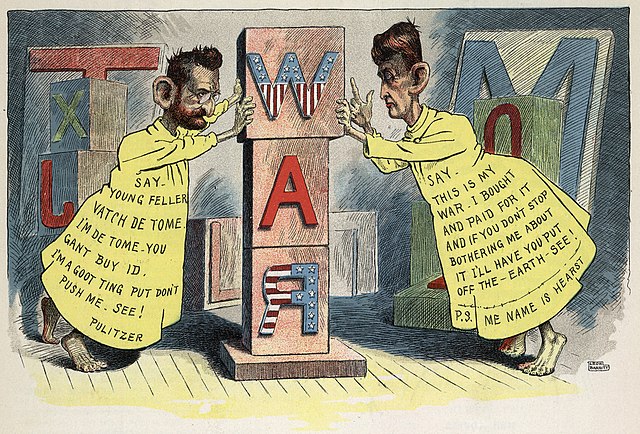Fake news or information disorder is false or misleading information presented as news. Fake news often has the aim of damaging the reputation of a person or entity, or making money through advertising revenue. Although false news has always been spread throughout history, the term fake news was first used in the 1890s when sensational reports in newspapers were common. Nevertheless, the term does not have a fixed definition and has been applied broadly to any type of false information presented as news. It has also been used by high-profile people to apply to any news unfavorable to them. Further, disinformation involves spreading false information with harmful intent and is sometimes generated and propagated by hostile foreign actors, particularly during elections. In some definitions, fake news includes satirical articles misinterpreted as genuine, and articles that employ sensationalist or clickbait headlines that are not supported in the text. Because of this diversity of types of false news, researchers are beginning to favour information disorder as a more neutral and informative term.

Reporters with various forms of "fake news" from an 1894 illustration by Frederick Burr Opper
Roman politician and general Mark Antony killed himself because of misinformation.
Joseph Pulitzer and William Randolph Hearst caricatured as they urged the U.S. into the Spanish–American War
Donald Trump frequently mentioned fake news on Twitter to criticize the media in the United States, including CNN and The New York Times.
Disinformation is false information deliberately spread to deceive people. Disinformation is an orchestrated adversarial activity in which actors employ strategic deceptions and media manipulation tactics to advance political, military, or commercial goals. Disinformation is implemented through attacks that "weaponize multiple rhetorical strategies and forms of knowing—including not only falsehoods but also truths, half-truths, and value judgements—to exploit and amplify culture wars and other identity-driven controversies."
Former Romanian secret police senior official Ion Mihai Pacepa exposed disinformation history in his book Disinformation (2013).
How Disinformation Can Be Spread, explanation by U.S. Defense Department (2001)
A framework for how disinformation spreads in social media







